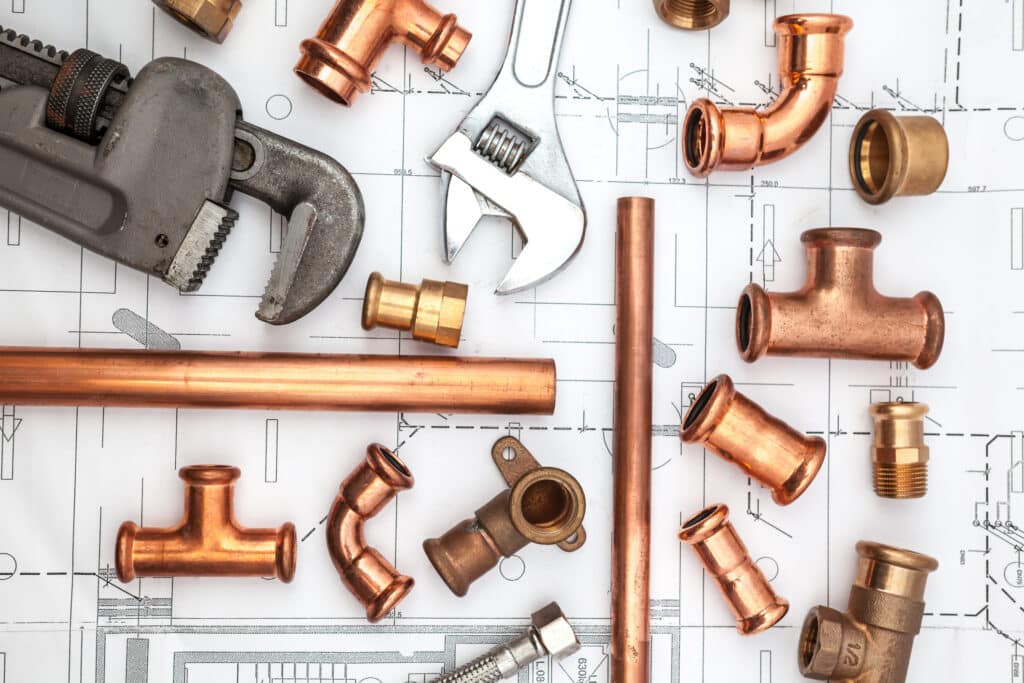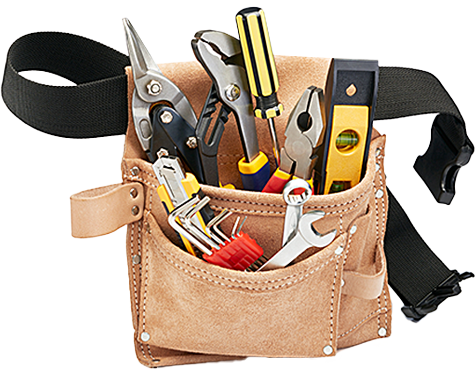Plumbing Layouts are one of the critical components to consider when embarking on new construction projects in Dallas, TX. An efficient design not only ensures a seamless supply of water but also significantly reduces costs in the long run. By prioritizing water conservation and ease of maintenance, homeowners can enjoy a sustainable and cost-effective living environment. This guide aims to shed light on the best practices for designing plumbing layouts that meet these criteria.
In Richardson, TX, and surrounding areas, the demand for innovative plumbing solutions is on the rise. As such, understanding the intricacies of plumbing layouts becomes essential. From selecting the right materials to positioning pipes strategically, every decision plays a pivotal role in the overall efficiency of the system. This article will explore how to achieve an optimal balance between functionality and sustainability.
Creating plumbing layouts that save water and minimize waste is not just beneficial for the environment; it also leads to lower utility bills. With the right approach, it’s possible to design a system that meets the needs of modern households while adhering to environmental standards. The focus will be on practical tips and strategies that can be applied during the construction phase to ensure efficiency and reliability.
Lastly, this guide will serve as a comprehensive resource for anyone involved in new construction projects in Dallas, TX, and beyond. Whether you’re a homeowner, builder, or architect, understanding the principles of efficient plumbing layouts is crucial. By following the recommendations outlined here, you can ensure that your project not only meets current needs but is also prepared for the future.
Understanding the Basics of Plumbing Layouts
Understanding the basics of plumbing layouts is the first step toward achieving an efficient and sustainable system in any new construction. This involves recognizing the importance of a well-thought-out design that facilitates water conservation and easy maintenance. In Dallas, TX, where modern living demands innovative solutions, the right plumbing layout can make a significant difference in how water is used and conserved in homes. By focusing on the fundamentals, homeowners and builders can lay the groundwork for a system that not only meets but exceeds expectations.
Selecting the appropriate materials is crucial in constructing a plumbing system that is both durable and environmentally friendly. Pipes, fittings, and fixtures should be chosen based on their quality, longevity, and efficiency. In Richardson, TX, for instance, the use of high-quality materials can prevent frequent repairs and replacements, thereby reducing waste and saving on long-term costs. It’s essential to consider these factors early in the planning stage to ensure the sustainability of the plumbing system.
Strategic placement of pipes is another key aspect of efficient plumbing layouts. By minimizing the distance hot water has to travel, energy consumption can be significantly reduced. This not only leads to a more efficient system but also contributes to lower utility bills. Careful planning and layout can prevent common problems such as heat loss and water waste, making the system more effective and eco-friendly.
Finally, incorporating water-saving fixtures and appliances from the start is a smart strategy for any new construction. Low-flow toilets, showerheads, and faucets can drastically cut down water usage without sacrificing performance. By integrating these elements into the plumbing layout, builders and homeowners in Dallas, TX, and beyond can achieve a balance between functionality and conservation. This approach ensures that the plumbing system not only serves the immediate needs of the household but also contributes to broader environmental goals.

Key Considerations for Water-Saving Plumbing Layouts
When planning water-saving plumbing layouts, one must prioritize efficiency from the very beginning. This approach involves a detailed analysis of the household’s water needs. By doing so, designers in Dallas, TX, can tailor systems that minimize waste while ensuring ample supply. Such precision in planning helps in crafting layouts that are both practical and sustainable.
Incorporating advanced technology plays a pivotal role in enhancing the efficiency of plumbing layouts. Innovations like tankless water heaters and water-recycling systems significantly reduce water and energy consumption. For residents in Richardson, TX, adopting these technologies can lead to substantial savings. Moreover, these systems contribute to a greener, more sustainable environment.
Effective communication between architects, builders, and plumbers is essential for implementing water-saving plumbing layouts. This collaboration ensures that the design and installation processes align with conservation goals. It also prevents potential issues that could arise from miscommunication, guaranteeing a smoother construction phase. Such teamwork is crucial in achieving a plumbing system that meets efficiency standards.
Lastly, ongoing maintenance and education are key to sustaining the benefits of water-saving plumbing layouts. Homeowners should be informed about the importance of regular checks and the impact of their daily water use. Simple practices, such as fixing leaks promptly, can prolong the system’s life and enhance its performance. Through awareness and proactive maintenance, the efficiency of plumbing layouts can be preserved for years to come.
The Role of Technology in Modern Plumbing Layouts
In today’s world, technology plays a crucial role in enhancing plumbing layouts, making them more efficient and environmentally friendly. Innovations such as smart water meters and leak detection systems allow homeowners in Dallas, TX, to monitor water usage in real-time, preventing wastage and identifying issues before they escalate. These technological advancements not only save water but also help in managing utility bills more effectively. By integrating these tools into plumbing designs, builders can offer state-of-the-art solutions that meet the demands of modern living.
Furthermore, the application of greywater systems in new constructions is a testament to how technology can be leveraged to promote sustainability in plumbing layouts. These systems recycle water from showers, sinks, and laundry, reducing the need for fresh water for non-potable purposes such as irrigation and toilet flushing. In Richardson, TX, adopting such practices can significantly contribute to water conservation efforts, showcasing a commitment to eco-friendly construction methods. This approach not only benefits the environment but also sets a new standard for responsible water use in the community.
The advent of touchless faucets and toilets has revolutionized plumbing layouts by offering a hygienic and water-efficient alternative to traditional fixtures. These devices, equipped with sensors, minimize contact and automatically regulate water flow, effectively reducing consumption. Their incorporation into homes and businesses across Dallas, TX, reflects a growing trend towards automation and efficiency. As these technologies become more accessible, they pave the way for plumbing systems that are not only convenient but also sustainable.
Lastly, the use of digital tools for planning and executing plumbing layouts has greatly improved the accuracy and efficiency of installations. Software applications enable precise mapping and assessment of plumbing networks, ensuring optimal placement and minimizing potential for errors. For builders in Richardson, TX, this means smoother project execution and enhanced satisfaction for homeowners. Embracing these digital advancements in plumbing design represents a forward-thinking approach to construction, marrying functionality with environmental stewardship.
Choosing the Right Materials for Sustainable Plumbing
Choosing the right materials is fundamental in creating sustainable plumbing layouts. In Dallas, TX, selecting eco-friendly and durable materials not only supports environmental goals but also ensures longevity. By opting for pipes and fixtures that reduce water usage, homeowners can significantly cut down on their utility bills. This approach aligns with the modern demand for homes that are both efficient and responsible.
In Richardson, TX, the focus on water conservation has led to an increased interest in materials like copper and PEX piping. Copper is known for its durability and resistance to corrosion, making it a wise choice for long-term plumbing solutions. PEX, on the other hand, is flexible and easy to install, reducing labor costs and the environmental impact associated with construction. Both materials exemplify the shift towards plumbing layouts designed with sustainability in mind.
Incorporating recycled materials into plumbing layouts is another step towards eco-friendly construction. These materials, often sourced from sustainable suppliers, offer a lower carbon footprint without compromising on quality or performance. By using recycled components, builders can contribute to a circular economy, minimizing waste and promoting resource conservation. This practice not only benefits the environment but also resonates with homeowners looking for green building options.
Finally, the selection of water-efficient fixtures is crucial in the design of sustainable plumbing layouts. Low-flow toilets, showerheads, and faucets can dramatically reduce water consumption. By integrating these fixtures into new constructions, builders can offer homes that are not only comfortable but also aligned with conservation efforts. This strategy ensures that plumbing layouts are not just functional but also contribute to a more sustainable future.
Designing Plumbing Layouts for Easy Maintenance
Designing plumbing layouts for easy maintenance starts with a thoughtful approach during the initial planning stage. By considering future access to pipes and fixtures, builders in Dallas, TX, can prevent headaches down the line. Strategic placement of shut-off valves and clean-outs ensures that repairs can be carried out quickly and efficiently. This foresight significantly reduces the time and cost associated with plumbing maintenance.
Another key aspect involves choosing modular components that can be easily replaced or upgraded. In Richardson, TX, adopting this practice means plumbing systems can adapt to new technologies or requirements without extensive overhauls. It’s beneficial to select fixtures and fittings known for their reliability and ease of repair. This approach not only streamlines maintenance but also extends the lifespan of the plumbing system.
Incorporating clear labeling and mapping of the plumbing network within a property is invaluable for quick identification of issues. Labels help homeowners and service professionals understand the layout at a glance, facilitating faster diagnostics and repairs. This transparency is crucial in emergency situations, where time is of the essence. Plus, it encourages regular maintenance, as the system’s design is less intimidating for non-professionals.
Finally, educating homeowners on the basics of their plumbing system contributes to its longevity and efficiency. Simple knowledge, such as how to turn off the main water supply, can prevent major water damage. Workshops or manuals provided by builders can empower residents in Dallas, TX, to perform minor maintenance tasks themselves. This proactive approach not only saves money but also fosters a sense of responsibility towards water conservation and system care.
Cost-Effective Plumbing Solutions for New Constructions
Implementing cost-effective plumbing solutions in new constructions begins with the careful selection of materials and technologies that offer long-term savings. In Dallas, TX, builders are turning to innovative plumbing layouts that incorporate energy-efficient water heaters and fixtures. These choices not only reduce the initial costs but also lower monthly utility bills, making them a smart investment for homeowners. By focusing on efficiency and sustainability, these plumbing systems offer financial benefits while supporting environmental conservation.
In Richardson, TX, the use of dual plumbing systems for potable and reclaimed water is gaining popularity as a cost-saving measure. This approach allows homeowners to utilize recycled water for non-drinking purposes, such as irrigation and toilet flushing. Such plumbing layouts significantly decrease the demand for treated water, leading to substantial savings on water bills. Moreover, this method exemplifies how modern plumbing solutions can align with eco-friendly practices without compromising functionality.
Strategically designing plumbing layouts to minimize waste and maximize efficiency is crucial for cost-effective construction. Incorporating leak detection systems early in the design process can prevent water loss and the associated costs. These systems quickly identify issues, allowing for prompt repairs that save both water and money. Additionally, the careful placement of pipes and fixtures reduces the need for expensive materials and labor, further lowering the overall cost of the plumbing system.
Finally, educating homeowners on the benefits of water conservation and efficient plumbing layouts can lead to additional savings. In Dallas, TX, builders and plumbers are partnering to provide resources and workshops that highlight simple yet effective ways to save water. This proactive approach not only empowers homeowners but also promotes the adoption of cost-saving practices in everyday life. Through education and the implementation of efficient plumbing layouts, new constructions can achieve significant reductions in both water usage and expenses.
Plumbing Layouts: Ensuring Compliance with Local Codes
Ensuring plumbing layouts comply with local codes is crucial for any construction project in Dallas, TX. Regulations govern everything from material use to installation methods, making adherence a top priority. By aligning with these standards, builders can avoid costly revisions and delays. This step also guarantees the safety and efficiency of the plumbing system for years to come.
In Richardson, TX, familiarizing oneself with the specific codes and requirements is essential for smooth project execution. Each area may have unique stipulations, affecting how plumbing layouts are designed. Builders and plumbers must work closely to ensure every aspect of the system meets or exceeds these local guidelines. This collaboration not only streamlines the approval process but also enhances the overall quality of construction.
Adapting plumbing layouts to comply with regulations can also introduce opportunities for innovation. For instance, code requirements on water conservation can lead builders to explore newer, more efficient technologies. These adaptations not only ensure compliance but also promote sustainability. As a result, homes become more eco-friendly, appealing to environmentally conscious buyers in the market.
Lastly, maintaining an open line of communication with local building inspectors can facilitate a smoother construction process. Inspectors can provide valuable insights and feedback, ensuring plumbing layouts are up to code from the start. This proactive approach minimizes the risk of non-compliance issues, ensuring that projects in Dallas, TX, and Richardson, TX, proceed without unnecessary interruptions or legal complications.
Tips and Tricks for Efficient Plumbing Layout Design
When designing efficient plumbing layouts, considering the path of water through the home can lead to significant savings. In Dallas, TX, optimizing the layout by placing bathrooms, kitchens, and laundry rooms close together reduces the need for long pipe runs. This strategy not only minimizes heat loss but also conserves water, making the system more sustainable. Additionally, it can significantly cut down on installation and material costs, making it a smart choice for builders and homeowners alike.
Another tip for creating efficient plumbing layouts involves the use of manifold systems. These systems allow for direct water lines to each fixture, which can be particularly beneficial in Richardson, TX, where water pressure can vary. By ensuring a consistent flow and reducing the need for fittings, manifold systems enhance overall efficiency. They also make it easier to isolate parts of the plumbing system for repair or maintenance, adding to the convenience.
Incorporating energy-efficient appliances from the beginning is crucial for an effective plumbing layout. High-efficiency water heaters, toilets, and showerheads can drastically reduce water usage without compromising performance. Such appliances are becoming the norm in new constructions, as they offer both environmental and financial benefits. Choosing these fixtures reflects a commitment to sustainability and can significantly lower utility bills over time.
Finally, regular reviews and updates to plumbing layouts can prevent inefficiencies and adapt to changing technologies or needs. In both Dallas, TX, and Richardson, TX, staying informed about the latest plumbing innovations can lead to more effective designs. Whether it’s adopting new materials or integrating smart home technology, there’s always room for improvement. By staying flexible and open to change, builders can ensure that plumbing systems remain efficient, cost-effective, and up to date.

Frequently Asked Questions
What are efficient plumbing layouts?
Efficient plumbing layouts are designed to save water and reduce costs in new buildings. They ensure pipes are strategically placed to minimize distances hot water travels. This setup leads to less water and energy waste. By optimizing the system, homeowners enjoy lower utility bills and a greener lifestyle.
How to choose materials for new constructions?
Choosing the right materials for new constructions is key to creating efficient plumbing layouts. Opt for durable, high-quality pipes and fixtures that resist corrosion and wear. This choice ensures longevity and reduces the need for frequent repairs. Selecting eco-friendly materials also helps conserve water and energy, aligning with sustainable building practices.
What are common plumbing mistakes?
Common plumbing mistakes include ignoring local codes, which can lead to costly corrections later. Another error is placing fixtures too close, making the space cramped and hard to use. Some forget to consider future access for repairs, leading to more demolition and expense when issues arise. Lastly, using mismatched materials can cause leaks and reduce the system’s lifespan, undermining efficiency.
How do plumbing layouts impact water pressure?
Plumbing layouts play a crucial role in maintaining consistent water pressure throughout a building. If pipes are too narrow or laid out inefficiently, water flow can be restricted, leading to weak pressure in faucets and showers. Conversely, well-designed systems ensure smooth and strong water delivery by optimizing pipe sizes and routes. Therefore, a thoughtful layout is essential for achieving the perfect balance of pressure and efficiency.
Can plumbing layouts reduce construction costs?
Yes, well-thought-out plumbing layouts can significantly lower construction expenses. By optimizing pipe paths, builders use fewer materials and reduce labor hours. Strategic placement also minimizes future maintenance costs by ensuring easy access for repairs. Overall, efficient designs lead to savings both during and after construction, benefiting homeowners and builders alike.






